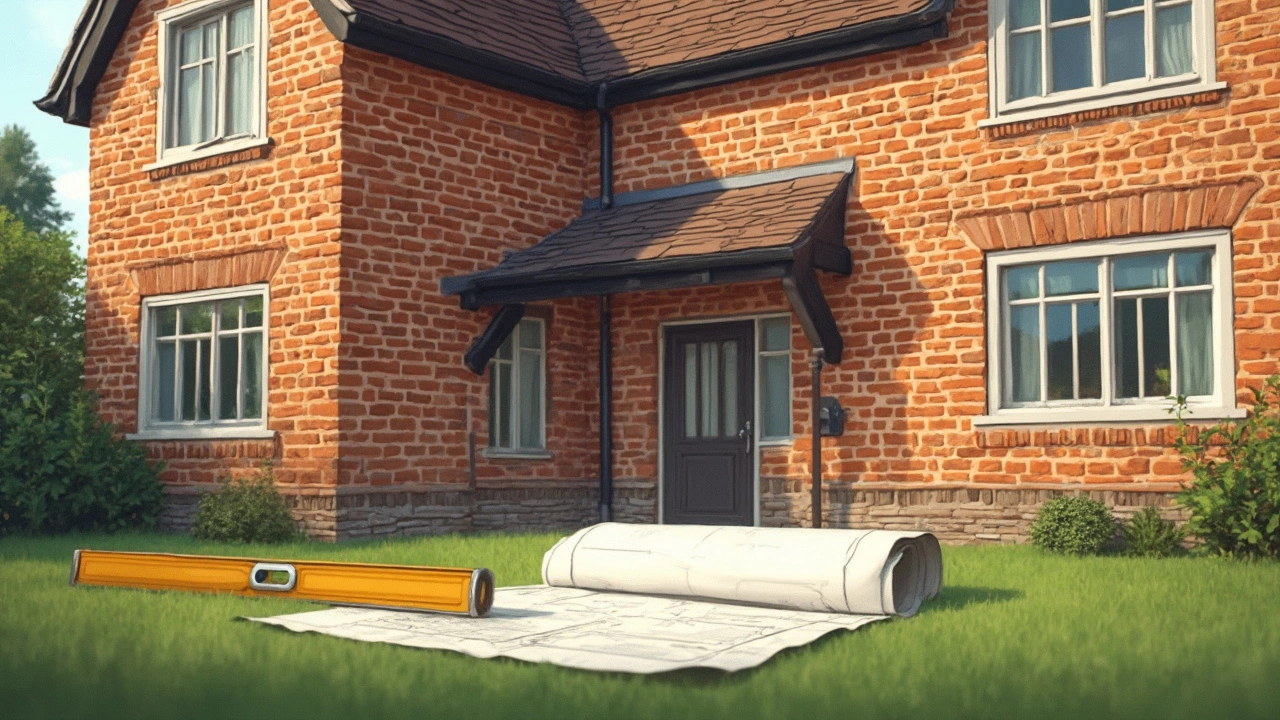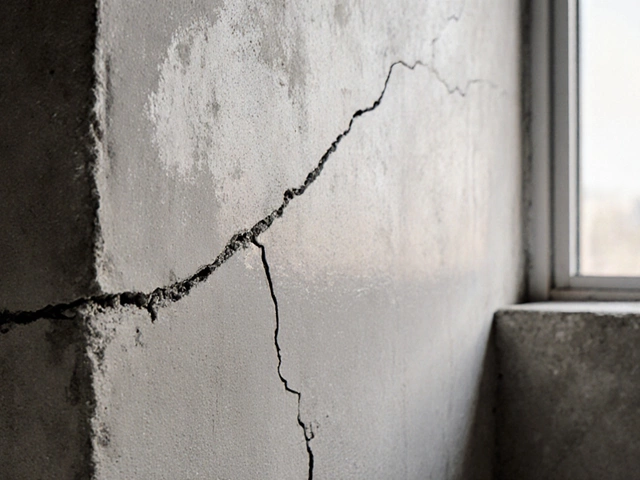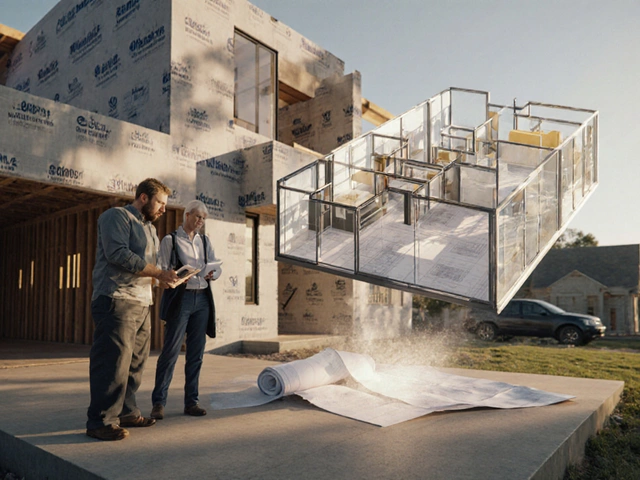Foundation trouble is one of those things that can freak out even the most chill homebuyer. Cracks in the walls, sloping floors—suddenly, the house you liked starts looking like a money pit. But here’s the real deal: not all foundation issues are equal, and sometimes, that scary problem could actually be your ticket to a better deal…if you know what you’re doing.
Builders and real estate agents will tell you, almost every older home has at least a little settling. Tiny cracks in the concrete aren’t always a big deal. But big gaps, doors that stick, or floors that dip? That’s a sign of something more serious. The trick is figuring out whether you're looking at a cheap fix or a nightmare.
Before getting cold feet, you should know that some foundation repairs are pretty straightforward and won’t ruin your budget. But others? They can run into the tens of thousands. That’s why you have to dig into the details and not just walk away at the first sign of trouble.
- What Foundation Problems Really Mean
- Red Flags vs. Fixable Issues
- How Much Will It Cost?
- Negotiating with the Seller
- Getting the Right Inspection
- Knowing When to Walk Away
What Foundation Problems Really Mean
When people talk about foundation problems, they're covering a whole range of issues—some are just cosmetic, while others can wreck your whole investment. At the basic level, a foundation’s job is simple: keep the house up and level. But over the years, things shift. Soil moves, moisture changes, and sometimes builders cut corners. Any of these can throw things off.
Here’s what you might run into with a house’s foundation:
- Small cracks in basement walls or floors
- Noticeable sloping or sagging of floors
- Sticking doors or windows
- Gaps between walls and ceilings or floors
- Water leaks or moisture in the basement
- Bulging walls or separated bricks outside
The most common causes? Expansive clay soil that swells when wet, drought that dries soil under the house, tree roots sucking away earth, or poor drainage around the home. Builders will tell you: not every crack is scary, but wide horizontal cracks, big vertical splits, or walls that lean usually mean bigger trouble.
According to HomeAdvisor’s 2024 report, about 25% of all U.S. homes will face some kind of foundation repair issue during their lifetime. The stats below show typical warning signs and what percent of homes experience them:
| Foundation Issue | % of U.S. Homes (Est.) |
|---|---|
| Small vertical cracks | 68% |
| Uneven/sloping floors | 14% |
| Water intrusion in basement | 19% |
| Doors or windows sticking | 21% |
So what’s the takeaway? Most houses have some cracking, but if you see wide gaps, big patches of mold, or foundation walls bowing in, that’s when you pause. And if you’re not sure, a professional inspection can save you a ton of stress (and regret) later on.
Red Flags vs. Fixable Issues
You’re standing in the living room, spotting a few cracks above the door. Is it a sign to bail, or can you fix it and move on? Spotting the difference between big trouble and the typical wear-and-tear is key when you’re thinking about foundation repair.
Some issues are honestly more about looks, while others scream “run for it!” Here’s what you need to know:
- Hairline cracks: Thin vertical cracks (usually less than 1/8 inch wide) in basement walls or floors tend to happen as concrete settles. If they’re not growing, they’re usually no big deal.
- Horizontal cracks: These can be bad news, especially in block or brick foundations. They often mean pressure from the outside soil is pushing the wall in. If you see horizontal cracking, bring in a structural engineer right away.
- Sticking windows and doors: If one or two stick but the rest are fine, it might be normal settling. But if several throughout the home jam, sag, or suddenly don’t shut, that’s a stronger warning sign.
- Uneven floors: A tiny slope is common in old homes. Whipping out a ball and seeing it roll fast across the room, though? That’s not good. Significant tilts or soft spots mean the problem’s probably more than just surface deep.
- Water intrusion: Damp spots, musty smells, or pooling water in the basement tell you there could be ongoing issues. Even if a seller says it's just “seasonal,” moisture can speed up a foundation’s decline.
How can you keep all this straight? Here’s a quick cheat sheet for what tends to be minor, versus what usually sets off alarm bells:
| Fixable Issues | Red Flags |
|---|---|
| Vertical hairline cracks | Horizontal/step cracks over 1/4 inch |
| Minor sloping (under 1 inch every 6 feet) | Serious sloping or bouncing floors |
| Occasional musty smell after rain | Persistent water leaks, puddling |
| Single area with sticky door | Multiple areas with shifting frames |
One more thing: houses in places with clay-heavy soil or a lot of rain are more likely to see real foundation shifts, because wet soil expands and contracts. If you’re in the South, Midwest, or anywhere that gets wild weather swings, pay extra attention to those red flags.
The bottom line: try to figure out if you’re dealing with normal aging, or something that threatens the whole structure. If you’re not sure, don’t guess. Hire an independent expert—usually a structural engineer—for a straight answer.
How Much Will It Cost?
Here's where most buyers start sweating: the price tag for fixing foundation problems. On average, foundation repairs in the U.S. can range anywhere from $2,000 for basic crack fixes up to $25,000 or more for major work like underpinning. The real number depends on what’s wrong and how quickly you catch it.
The cost shakes out based on a few things:
- Type of problem – Are you dealing with tiny cracks or a sinking corner of the house? Surface cracks might cost as little as $500 to seal, but lifting a whole section with piers could run $10,000 or more.
- Size of your home – More square footage usually means more money. Bigger houses need more materials and labor.
- Location – Prices change by region. For example, homes in Texas or Southern California often have more foundation issues due to soil, which can drive up demand and cost.
- Extent of damage – The longer the problem goes, the pricier it gets. Small fixes ignored can later mean major construction.
Don’t forget, you’ll probably need to budget for a professional inspection—these usually cost $300–$800, but that’s a small price for some peace of mind.
Mark Binsfield, owner of Perma-Seal Basement Systems, says it plainly:
“A quick $2,000 crack repair could save you from a $15,000 job down the line, so get a real estimate before you walk away or jump in.”
If you want to be sure you’re not getting ripped off or missing a hidden nightmare, always get a written quote from a reputable structural engineer or a foundation repair contractor before you make an offer—or even after the inspection. Sometimes, sellers are willing to knock down the price of the home based on real quotes, so having those numbers gives you serious bargaining power.
Bottom line: Don’t guess. Get real numbers from real pros and use them to make your decision—and your offer.

Negotiating with the Seller
When you spot foundation problems during a home purchase, your next move should be negotiating hard. Don’t assume you have to eat those massive repair costs. Sellers usually know when their house has these issues, and they expect you’ll bring it up.
The first step is getting a detailed repair estimate from a legit contractor—think foundation specialists, not just a general handyman. These written estimates give you serious leverage. You’ll want at least one, but having two gives you more ammo in talks.
- Ask the seller to cover repairs before closing. Some are willing to fix things to keep the sale moving.
- If they won’t handle it, push for a big price cut. For reference, foundation repairs in the U.S. usually run from $4,000 up to $25,000, depending on how bad things are. Major repairs, like underpinning or installing piers, are at the higher end.
- Request seller credits at closing—this means you get cash back to pay for repairs after you own the house, which is common if the sellers want a quick sale.
- Consider asking for a home warranty that covers structural defects for at least a year. It won’t fix current issues, but if something else pops up, you’re not footing the bill alone.
Foundations scare off buyers, so you actually have more power here than you think. Use it. Always factor in the cost of repairs plus a cushion—problems can grow once work starts. And remember, don’t sign anything until you’re clear about what exactly is wrong and how much it will take to fix it.
If you want to make the most of it, show up at negotiations with facts. Sellers get nervous when you lay out bids from actual foundation repair pros, photos of the cracking, and details from an inspection. The foundation repair issue will feel real to them too, not just something they can brush off with “that’s just settling.”
Getting the Right Inspection
If you’re even half-serious about that house with foundation trouble, don’t even think about skipping a professional inspection. Your regular home inspector can spot the basics, but you really want a structural engineer or a foundation repair specialist—they know what hidden stuff to look for, and their advice is way more reliable.
Basic rule: the more detailed the inspection, the better for your wallet (and your sanity). You’re not just looking for cracks; you want to know: Are they old or new? Stable, or getting worse? Is water making the problem bigger? Good inspectors will take measurements to check if things are shifting.
Here’s a quick hit-list of what a foundation expert usually checks:
- Cracks in floors, walls, and ceilings (width, length, and pattern)
- Uneven floors or sloping rooms
- Sticky windows or doors that won’t shut right
- Moisture problems around the foundation (like standing water outside or dampness inside)
- Previous repair attempts—did someone patch things or just disguise them?
This isn’t the time to cheap out. As of 2024, a foundation repair inspection runs from $300 to $700 in most cities, but catching a $15,000 problem for $500 feels like money well spent, right?
| Issue Found | % of Inspections | Average Repair Cost |
|---|---|---|
| Minor cracks (cosmetic) | 43% | $350 |
| Moderate settling | 31% | $2,400 |
| Major structural movement | 14% | $11,500 |
| Water/moisture intrusion | 21% | $1,000 |
Always get a written report. Sellers are more likely to negotiate if you can show them real facts on paper. Plus, some mortgage lenders might flat-out refuse to finance a home with serious foundation issues unless there’s documentation of repairs or a plan in place.
Knowing When to Walk Away
There’s a point where even the toughest fixer-upper fan has to say “nope.” Walking away isn’t about being scared, it’s about being smart with your money and time. Some foundation problems cross the line from manageable to a complete deal-breaker.
You should rethink the whole thing if you run into any of the following:
- Major structural shifts: If the foundation has big chunks missing, serious bowing, or the house leans, this usually means the fix is huge (and expensive).
- Repeated, severe water intrusion: If every rainy season brings in water, those issues will pop back up even after repairs.
- Quotes for repairs are higher than the house is even worth: If a few foundation companies estimate repairs will cost more than 30% of the property value, it almost never makes sense financially.
- Active lawsuits against the property for previous foundation work or code violations. Legal trouble equals big headaches.
For a little perspective, check this out:
| Repair Level | Average Cost (2024, USD) | Red Flag? |
|---|---|---|
| Minor crack sealing | $500 - $2,000 | No |
| Piering, underpinning (major structural fixes) | $15,000 - $45,000 | Yes |
| Full foundation replacement | $60,000+ | Definitely |
Here’s another key fact: Studies from the Foundation Repair Association show that about 40% of houses with major structural issues end up costing the new owner more than planned, even with a careful repair budget. Surprises pop up fast—like hidden plumbing or termite damage under floors.
So if you’re looking at any of these major red flags—especially if more than one shows up—it’s usually best to move on. You’re better off finding a place where “foundation repair” means a couple of cracks, not a complete rebuild. Don’t let the pressure from a motivated seller trick you into a money pit. If it doesn’t feel right, trust your gut and walk away.
When in doubt, get a second (or third) opinion from a foundation specialist who isn’t connected to the real estate deal. It’s not worth risking your finances and sanity just to land a bargain that turns into a nightmare.








